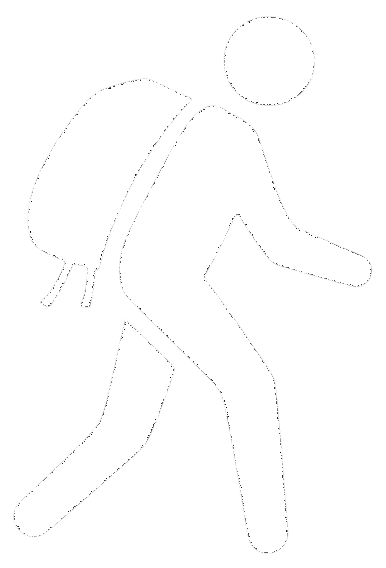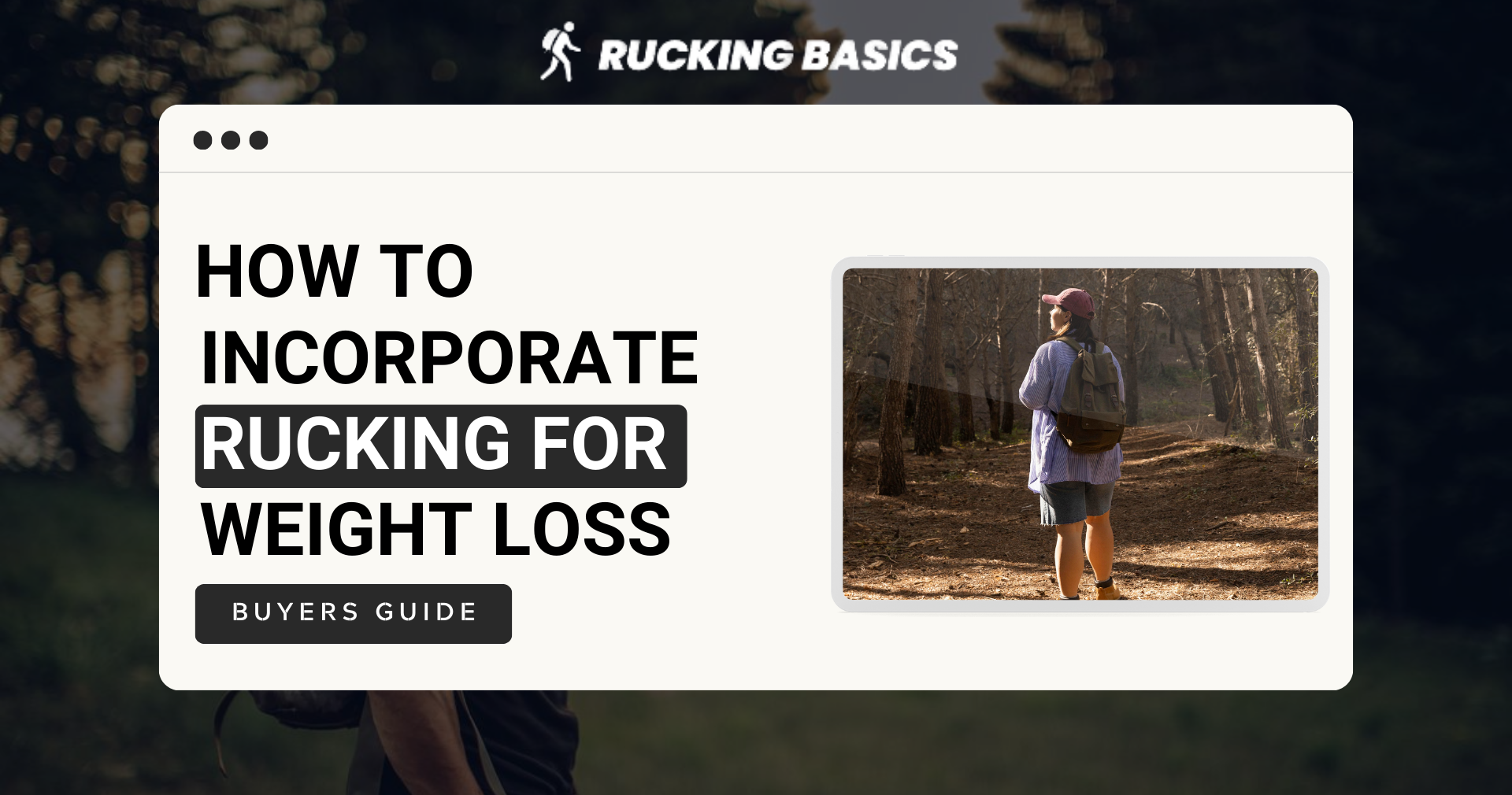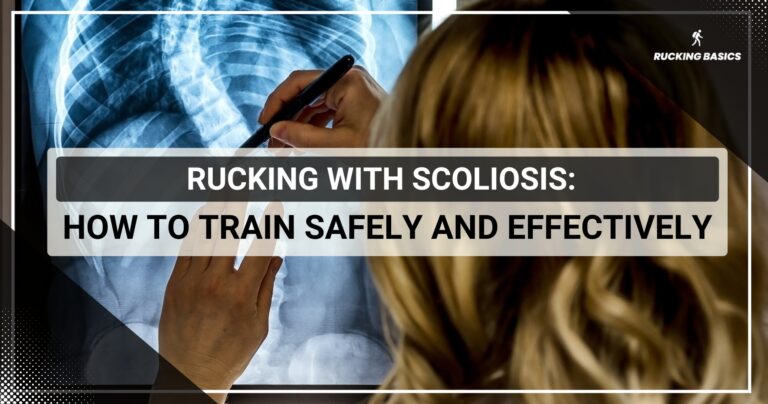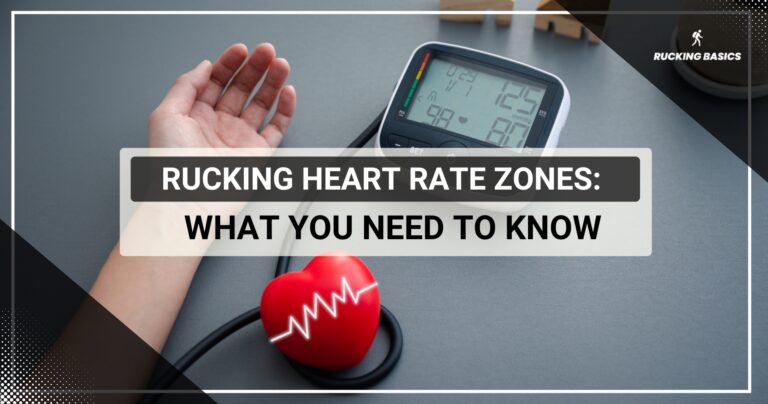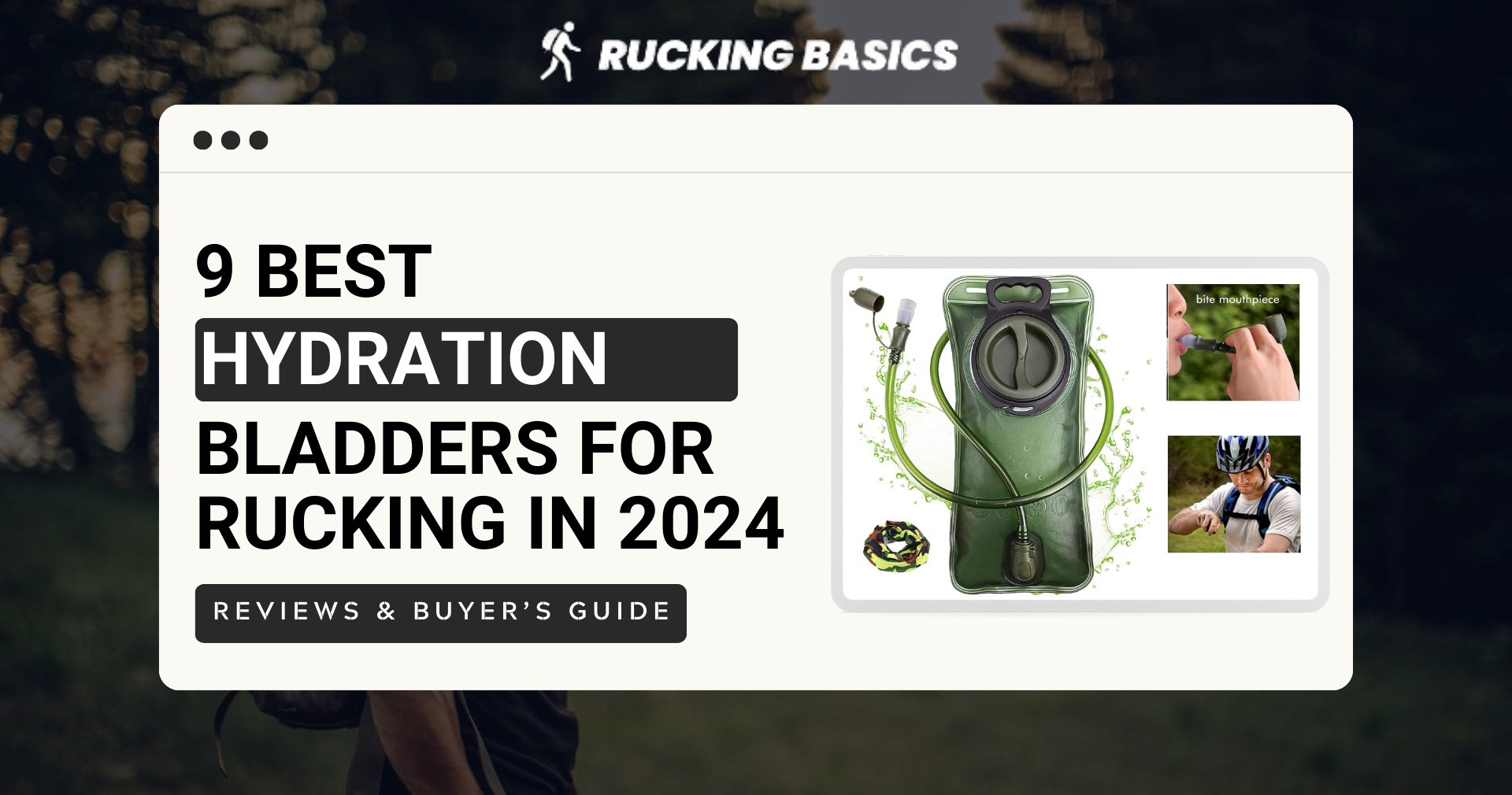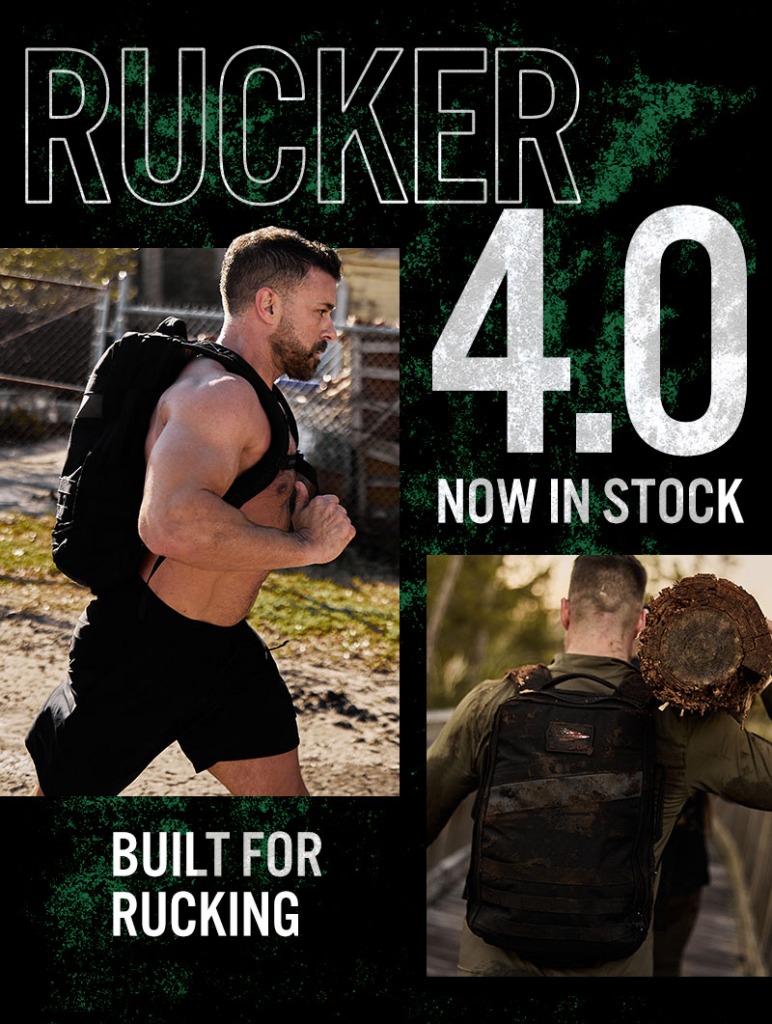For decades, cardio exercises were considered instrumental for weight loss. Then, a systematic review from 2020 found that resistance exercise is more effective at increasing resting metabolic rate than aerobic exercise alone. (1) And resting metabolic rate is key to long-term weight loss. In my experience as a fitness coach, it is best to combine cardio and resistance exercises which is where it makes sense to incorporate rucking for weight loss.
Rucking has been gaining popularity in recent years as a powerful tool for weight loss for a good reason. Unlike fancy workouts that are often almost useless, rucking offers a straightforward approach that delivers real results.
In this guide, I’ll explore how rucking benefits weight loss, provide practical strategies for incorporating it into your routine, and give you numerous tips.
How Rucking Benefits Weight Loss?
Let’s delve straight into the heart of the matter!
Increased Calorie Burn
To lose weight, you must be in a calorie deficit; it’s that simple. Although many try to convince you that complex programs and magical substances are needed, in fact, you need to burn more calories than you eat.
Rucking with a weighted backpack elevates your heart rate and engages more muscle groups, resulting in a high calorie burn. That calorie expenditure, together with basal metabolism, leads to progressive weight loss. There are claims that rucking can burn up to 50% more calories per mile than low impact walking alone, which I find easy to believe.
To better understand the numbers, check out how many calories does rucking burn during a typical session.
Muscle Building
We go to the gym to expose our muscles to added resistance and thus make them grow. It is similar to rucking, where the added resistance of the backpack during rucking forces your muscles to work harder, resulting in greater strength and muscle building.
Although the muscle adaptation caused by gym and rucking cannot be compared, rucking still targets pretty much the whole body. That’s how you become stronger and can ruck longer, burning more calories eventually. More muscles also affect metabolism, but more on that in the next paragraph.
Of course, to maximize these benefits, it’s essential to focus on learning to set an appropriate rucking pace but also rucking heart rate zones. A well-managed pace ensures you’re challenging your muscles without overexerting yourself, which helps build endurance and burn calories efficiently over time.
If you’re wondering exactly does rucking build muscle and how it compares to other forms of resistance training, explore further insights to understand its muscle-building potential.
Impact on Metabolism and Fat Loss
So, the benefits of rucking extend beyond the duration of the session/march/workout.
Regular rucking sessions lead to metabolic adaptations, such as increased muscle mass and improved metabolic efficiency. More muscles need more energy to maintain compared to fat tissue, translating into a higher resting metabolic rate. Simply put, this means that your body will continue to burn calories even after you’ve finished rucking. This will enable you to lose weight faster and/or eat more without adding weight.
Psychological Benefits of Outdoor Activity
I keep reminding my clients that weight loss is even more of a mental than a physical challenge (assuming there is no underlying medical condition.)
Obesity is often connected to anxiety, inability to deal with problems, and many other similar things. That’s why it’s harder to fight off urges and cravings mentally. Your body certainly does not need that much food. This leads us to the conclusion that we have to address the mental aspect as well, and for that, rucking is just perfect.
Nature has a profound impact on mental health, and engaging in outdoor activities like rucking provides an opportunity to immerse yourself in natural surroundings.
One of the critical psychological benefits of rucking outdoors is stress reduction. Being surrounded by greenery and fresh air has a calming effect on the mind, lowering cortisol levels and promoting relaxation. By the way, ghrelin and cortisol often causes hunger. (2)
Exposure to natural light and vitamin D synthesis also boost serotonin levels, the neurotransmitter associated with happiness and mood regulation.
Structuring Rucking Workouts for Weight Loss
In any case, rucking will help you lose weight, but you significantly limit your potential if you don’t structure and monitor daily workouts.
Frequency and Duration
Gradual progression and progressive overload! Two paramount factors that determine the frequency and duration of your sessions in the long term. You should start with short rucks to avoid terrible DOMS that will prevent any physical activity for days.
Be moderate at first, starting with 2-3 rucking sessions per week to allow your body to adapt to the new activity and minimize the risk of overuse injuries.
As your fitness level improves and you become more comfortable with rucking, increase the frequency of your sessions to 4-5 times per week. When the goal is weight loss, it is better to have several shorter, faster rucks per week than one ruck march on the weekend.
In terms of duration, aim for 30-60 minutes per rucking session, depending on your goals, fitness level, and free time.
Remember that consistency is vital when it comes to seeing results from rucking for weight loss.
Beginners, Intermediate, and Advanced Levels
There are four differences between the levels — duration, intensity, frequency, and choice of terrain.
Duration and frequency do not require further explanation. Regarding intensity, you can increase it in two ways: by increasing the rucking speed and by increasing the weight in your backpack.
Beginners should go on undemanding terrain, like flat, even terrain, while advanced ruckers find challenges carrying heavy backpack on steep hills, rugged trails, and uneven surfaces.
Monitoring Progress and Adjustments
My experience as a strength & conditioning coach has shown me that regular monitoring and adjusting is crucial for success.
To be able to adjust, you have to track distance, time, and intensity. Keep a detailed log of your rucking workouts, including the distance covered, the time taken to complete each ruck, and the weight carried in your backpack.
Although listening to your body is not an exact parameter, it is still key to avoiding overtraining and injury during rucking. If you feel persistent soreness or fatigue, even after a good night’s sleep and proper nutrition, it may be a sign that you need to scale back your intensity or take a rest day to allow your body to recover.
By listening to your body and following the results, you can periodically reassess your goals and prevent weight-loss plateaus. (3)
Integrating Rucking with Other Fitness Activities
We share a love for rucking, so I totally understand your enthusiasm to devote yourself completely to it. However, in order for weight loss to be maximally successful, you need to integrate other activities into your plan.
Combining Rucking with Strength Training
I mentioned above that building muscle mass is very important for weight loss, so pairing rucking with strength training exercises offers a holistic approach to fitness.
An increase in metabolic rate is not all. Doing exercises such as squats, lunges, and push-ups will help you ruck longer with heavier weight because your body will be capable of withstanding such demands. That will further increase caloric burn.
Balancing Rucking with Other Cardio Exercises
Rucking is a great cardiovascular exercise, but why make the routine monotonous when there is so much variety? Incorporating other forms of cardiovascular exercise, such as cycling or swimming, alongside your rucking workouts can prevent boredom and plateaus.
Since your goal is weight loss, you are probably not fit enough to do interval training and sprints 100% safely, but as you progress, you should definitely include those activities as well. High-intensity interval training (HIIT) and sprints are incredibly effective at torching fat.
Common Mistakes to Avoid
Myths, misconceptions, and mistakes surround the weight loss process. In my opinion, these are the main reasons why many people fail to reach their goals or give up halfway through. I would need a separate article to address all the weight loss myths, so let’s focus on those closely related to rucking.
Overestimating Calorie Burn
Yes, rucking is an effective calorie-burning exercise, but you must not overestimate its impact on weight loss. Use any calorie counter. Although they are often widely imprecise, they will still give you a good insight into how hard it is to burn 500 or 1000 kcal.
So, even after a long ruck session, you still have to watch your diet and other factors because you can’t burn so many calories that you can eat whatever you want.
Ignoring Proper Gear and Footwear
High-quality equipment does not directly affect weight loss, but the indirect effect is significant.
Shoes designed specifically for rucking, together with insoles and socks, are essential for preventing discomfort, blisters, and reducing the risk of injury.
Also, improper rucksacks cause back problems and so on. Other rucking accessories, like moisture-wicking clothing and hydration bladders, affect comfort, too. Therefore, if you decide to ruck regularly, invest in essential gear.
Nutrition and Hydration Mistakes
Just because you want to lose body weight doesn’t mean you have to starve. This is an unhealthy and unsustainable long-term approach. Maintaining a balanced diet is essential for supporting weight loss goals but also optimizing performance during rucking. You can’t ruck intensely if you’re dizzy from hunger.
Focus on consuming nutrient-dense foods that provide essential vitamins, minerals, and macronutrients. Limit processed foods and sugary snacks. Before ruck, you can eat a bit more carbs.
Staying hydrated is another crucial aspect for maintaining optimal performance. You may think you will gain weight that way, but the goal is certainly not to lose water weight, rather to lose fat. Drink plenty of water before, during, and after your rucks to replenish fluids lost through sweat and support proper hydration. In this way, you will also control your hunger and cravings.
To grow your muscles, aim to consume a combination of carbohydrates and protein within 30-60 minutes post-ruck to replenish glycogen stores and promote muscle recovery.
Takeaways To Remember When Rucking For Weight Loss
Rucking can be a significant addition to your fitness regimen on your weight loss journey. Weight loss is very challenging, so you need patience and perseverance.
Even more important than what the scale shows is your health. It’s better to have a few extra pounds and be healthy than to have a perfect BMI but a poor blood count. I’m telling you all this because rucking offers numerous benefits beyond just burning calories, which is why ruck marching should be part of your regular routine.
Frequently Asked Questions
How does rucking affect metabolism and calorie expenditure compared to traditional walking?
When comparing rucking and walking for weight loss, rucking is a clear winner since it elevates metabolism and calorie expenditure beyond traditional walking. The additional weight carried during rucking and higher intensity result in a higher calorie burn.
Can rucking help with stubborn areas of fat loss, such as belly fat or love handles?
No, no activity can target a specific part of the body. It’s a weight loss myth. You can do crunches, but that won’t make you burn belly fat. The combination of cardiovascular fitness and muscle engagement during rucking contributes to overall fat loss throughout the body, but you can’t take a shortcut.
How soon can one expect noticeable weight loss results from a consistent rucking regimen?
The timeframe for seeing noticeable weight loss results from rucking or other sports activity varies from person to person. However, with consistent rucking sessions combined with a healthy diet, you can expect to see first changes within a few weeks.
Can rucking prevent weight regain after achieving weight loss goals?
I often recommend rucking as an effective tool for preventing weight regain after achieving weight loss goals, the so-called Yo-yo effect. Rucking can help you maintain the calorie expenditure and metabolic rate you had during a period of significant weight loss.
References
- MacKenzie-Shalders K, Kelly JT, So D, Coffey VG, Byrne NM. The effect of exercise interventions on resting metabolic rate: A systematic review and meta-analysis. J Sports Sci. 2020 Jul;38(14):1635-1649. doi: 10.1080/02640414.2020.1754716. Epub 2020 May 12. PMID: 32397898.
- Chao AM, Jastreboff AM, White MA, Grilo CM, Sinha R. Stress, cortisol, and other appetite-related hormones: Prospective prediction of 6-month changes in food cravings and weight. Obesity (Silver Spring). 2017 Apr;25(4):713-720. doi: 10.1002/oby.21790. PMID: 28349668; PMCID: PMC5373497.
- Sarwan G, Rehman A. Management of Weight Loss Plateau. 2022 Oct 24. In: StatPearls [Internet]. Treasure Island (FL): StatPearls Publishing; 2024 Jan–. PMID: 35015425.
